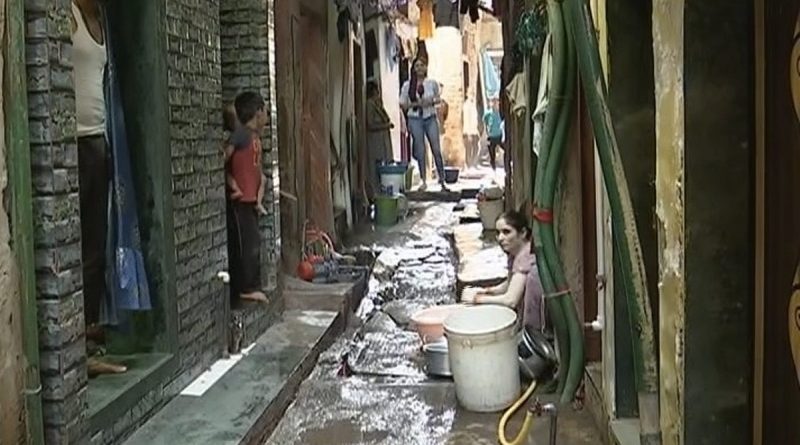Survey on Rehabilitation Eligibility Supported by Residents
Dharavi renovation project aims to change the slum, which is approximately the size of Monaco
Mumbai:
In a boost for the redevelopment of Asia’s largest slum, a recently established association of residents of Dharavi and its surrounding area has thrown its weight behind an ongoing state government-led survey of informal tenements, a precursor to the USD 3-billion project by the Adani group that vows to improve the lives of an estimated one million residents.
“We urge the survey be carried out as soon as possible to ensure that the renovation can progress without further delays,” Citizen and Society Development Welfare body of Dharavi residents wrote to SVR Srinivas, CEO Dharavi Redevelopment Project/Slum Rehabilitation Authority (DRP/SRA), of government of Maharashtra, on July 30.
Members of Citizen and Society Development Welfare, who have coined the slogan of Dharavi Banao Andolan, met Mr Srinivas and handed over a memorandum requesting an acceleration of the survey being conducted in Dharavi.
The survey, which commenced on March 18, 2024, has so far finished 10,000 tenements through door-to-door visits while tallying has been done on over 21,000 tenements. This includes residential and commercial tenements and religious structures as well throughout Dharavi.
Mapping of the approximately 600 acres of densely populated Dharavi is vital for the redevelopment that is expected to take seven years to finish. Eligible residents will receive a 350-square-foot flat in the area once the project is completed, while ineligible residents will be relocated elsewhere in Mumbai.
3-D mapping specialist Genesys International Ltd will map the area while UK consultancy Buro Happold Ltd will outline the physical infrastructure requirements and Boston-based Sasaki Associates Inc is responsible for overall redesign.
Dharavi residents, known as Dharavikars, have also requested Mr Srinivas to take legal action against those who are resisting the survey process.
“We urge the authorities to take appropriate action against any individual or group of individuals, who are obstructing the survey. Ensuring the legal and uninterrupted progress of the survey is crucial for the benefit of all residents of Dharavi,” the association said in the memorandum.
The delegation emphasized to Mr Srinivas that impeding the survey process was not only harmful to the redevelopment efforts but also constituted a breach of the law.
“It is explicitly stated in the law that no one is authorized to obstruct government work,” they said.
Last week, several residents took to the streets opposing the disruption of the survey by some. They wanted Mr Srinivas to recognize Dharavi Banao Andolan as the rightful representative of the people of Dharavi and not the non-residents of Dharavi, who are actively opposing the survey and the overall redevelopment efforts.
Around 30 to 40 DRP survey teams are visiting each and every tenement, despite heavy rains and knee-deep water-logged alleys of Dharavi, to ensure that no tenement is overlooked. They will soon be increased to 100 teams in the near future.
DRP, a Maharashtra government department, is conducting the survey along with Dharavi Redevelopment Project Private Ltd (DRPPL), a joint venture between the Government of Maharashtra and the Adani Group, to gather data from hundreds of thousands of informal tenement residents of Dharavi to help the state government establish their eligibility criteria to assist in rehabilitation under the proposed redevelopment project.
The Dharavi redevelopment plan is unique from the standard SRA scheme, ensuring that all qualifying tenement holders are offered homes of up to 350 square feet. Residents are defined as ones having evidence of residing in the area prior to January 1, 2000.
Commencing from the 1950s, several state governments had floated tenders to redevelop Dharavi, but none materialized. The redevelopment essentially required acquiring large parcels of land, attracting investors to construct modern utilities and resettling local residents.
The current redevelopment plan — the state government’s fourth attempt via a global tender — is gaining local support. The project aims to change the slum, which is around the size of Monaco, into modern apartments, offices, and malls.
Dharavi began as an informal settlement for Muslim leather tanners but quickly evolved into a diverse community with migrants from all over India making it their home. As Mumbai expanded, the slum was no longer on the outskirts of the city and is now home to a wide variety of cottage industries, from waste recycling to leather, textiles, and pottery manufacturing.
The Adani-led redevelopment project includes various initiatives such as sustainable transportation systems and modern infrastructure utilities. It also includes vocational training to empower youth and aspiring workers in Dharavi, helping them secure eco-friendly jobs and enhance their earning potential. These efforts are designed to create a more prosperous and environmentally friendly future for the community.
(Disclaimer: New Delhi Television is a subsidiary of AMG Media Networks Limited, an Adani Group Company.)
Waiting for response to load…

